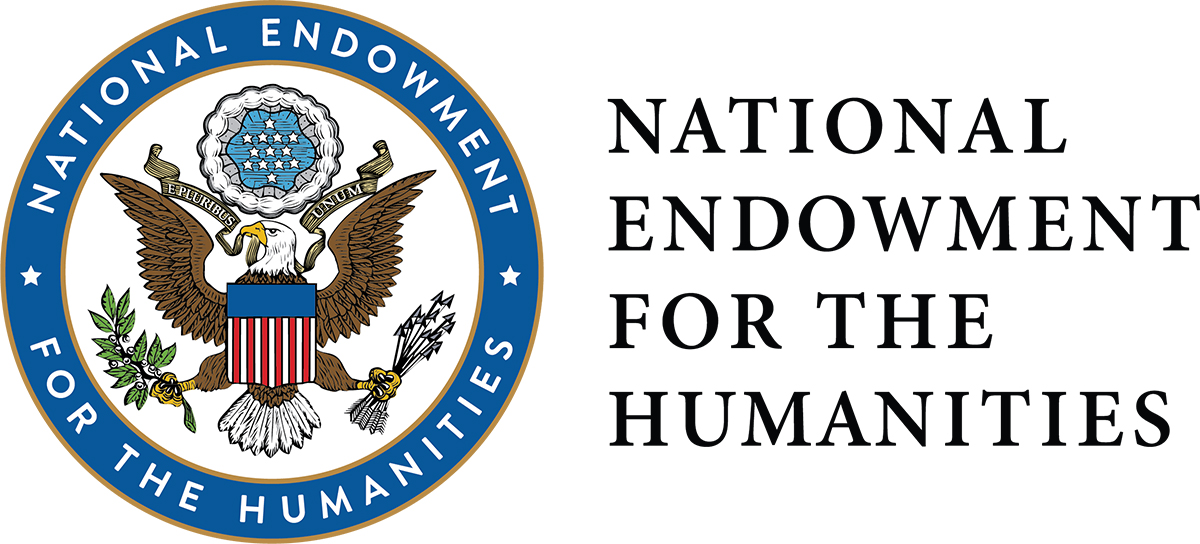FUNDING CUTS IMPACT CT HUMANITIES: Help CT Humanities navigate recent funding cuts and continue our vital work across Connecticut. All donations made to CTH will be matched dollar-for-dollar up to $50,000. Donate today!
News & Updates
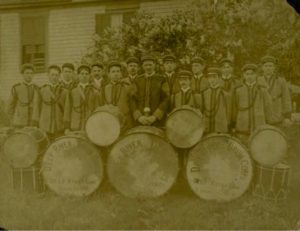
The World’s Record for the Largest Muster – Who Knew?
Deep River, Connecticut holds the distinction of hosting the largest Ancient Fife and Drum Muster, setting the record in 1976.
Read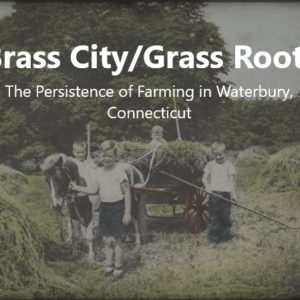
Brass City/Grass Roots: Waterbury Farming in the Late 1800s
This article is part of the digital exhibit “Brass City/Grass Roots: The Persistence of Farming in Waterbury, Connecticut”
Read
Brass City/Grass Roots: Farming as Recycling: The Becces in the North End
This article is part of the digital exhibit “Brass City/Grass Roots: The Persistence of Farming in Waterbury, Connecticut”
Read
Brass City/Grass Roots: From Farmers to Developers: The Rasmussens of Town Plot
This article is part of the digital exhibit “Brass City/Grass Roots: The Persistence of Farming in Waterbury, Connecticut”
Read
Brass City/Grass Roots: The Pierponts of East Farms
This article is part of the digital exhibit “Brass City/Grass Roots: The Persistence of Farming in Waterbury, Connecticut”
Read
Connecticut Suffragists Appeal to the President – Today in History: July 12
On July 12, 1918, Connecticut suffragists rallied in Hartford and Simsbury to appeal to President Woodrow Wilson for help in getting women the right to vote.
Read
Brass City/Grass Roots: Struggles and Decline
This article is part of the digital exhibit “Brass City/Grass Roots: The Persistence of Farming in Waterbury, Connecticut”
Read
Brass City/Grass Roots: Food Marketing and Processing as Part of Civic Culture
This article is part of the digital exhibit “Brass City/Grass Roots: The Persistence of Farming in Waterbury, Connecticut”
Read
Brass City/Grass Roots: What Makes a Farm a Farm? Other Sites of Food Production in Waterbury
This article is part of the digital exhibit “Brass City/Grass Roots: The Persistence of Farming in Waterbury, Connecticut”
Read
Brass City/Grass Roots: Remnants and Revivals
This article is part of the digital exhibit “Brass City/Grass Roots: The Persistence of Farming in Waterbury, Connecticut”
Read
Brass City/Grass Roots: Bucks Hill: Waterbury’s Rural Holdout
This article is part of the digital exhibit “Brass City/Grass Roots: The Persistence of Farming in Waterbury, Connecticut”
Read
Bridgeport’s Catastrophic 1911 Train Wreck
In the early morning hours of July 11, 1911, a train derailed in Bridgeport, killing fourteen people. Among the first responders were members of the St. Louis Cardinals baseball team.
Read
Drawn to Superheroes
Working as an illustrator at DC Comics for over 30 years, Aparo drew for such legendary series as Aquaman, The Brave and the Bold, Green Arrow, and The Spectre.
Read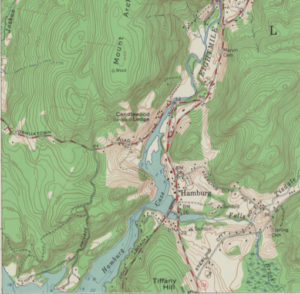
Continuity and Change along the Eightmile River
The history of the Eightmile River illustrates the vital and changing roles that such waterways have played in Connecticut’s development.
Read
Erector Set Patented – Today in History: July 8
On July 8, 1913, the United States Patent Office issued a patent to Alfred C. Gilbert of New Haven for his “Toy Construction-Blocks.”
Read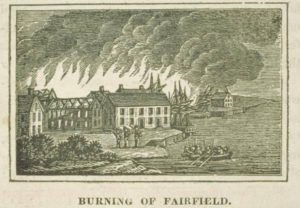
British Burn Fairfield – Today in History: July 7
On July 7, 1779, during the Revolutionary War, the British anchored a fleet of warships off the coast of Fairfield, Connecticut.
Read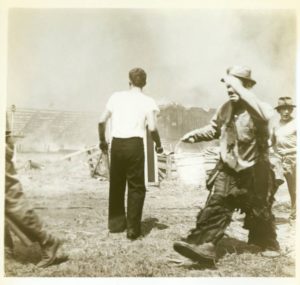
The Hartford Circus Fire – Today in History: July 6
Called the worst disaster in Hartford’s history, the fire killed 168 and injured 487, including many children.
Read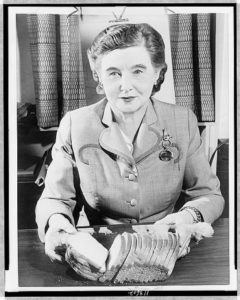
Pepperidge Farm Opens Bakery – Today in History: July 4
On July 4, 1947, Margaret Rudkin of Fairfield opened a modern commercial bakery in Norwalk and gave it the name of her small bakery, Pepperidge Farm.
Read
Bigelow Tea–A Connecticut Tea Party
The Bigelow Tea Company was started as a small family business in Manhatten before moving to Norwalk and then Fairfield.
Read
Mohegan Sacred Sites: Moshup’s Rock
Every nation has a spirit. The Mohegan Spirit moves and breathes within the very rocks and trees of the Mohegan Homeland in Uncasville, Connecticut.
Read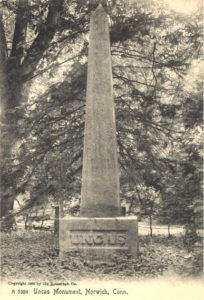
Buffalo Bill Cody Visits the Monument of Uncas – Today in History: July 2
On July 2, 1907, American adventurer and showman “Buffalo Bill” Cody visited the Mohegan Royal Burial Grounds in Norwich.
Read
An Artist’s Life in Hartford: The Early Career of Dwight Tryon
Hartford native Dwight Tryon enjoyed a long, successful career as a landscape painter and teacher with studios in New York City and Massachusetts.
Read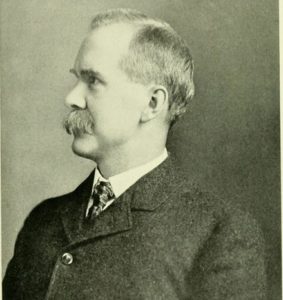
Connecticut Attorney General John H. Light and His Fight for Woman’s Suffrage
Attorney General John H. Light made his pro-suffrage stance public at a time when such advocacy could still lead to criticism
Read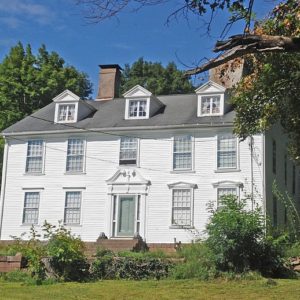
The Seth Wetmore House: A Storied Structure of 18th Century Middletown
Seth Wetmore was a merchant, judge, and deputy to the General Court of Connecticut. His house is one of Middletown’s oldest homes and one of thirty-three in the city listed on the National Register of Historic Places.
Read
Merritt Parkway Creates Scenic Gateway to New England
This Depression-era road improvement project sought to artfully balance the natural and built environments.
Read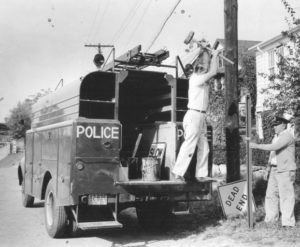
Greenwich Emergency Responders: On the Move Overtime
Horses, motorcycles, and boats are just a few of the modes of transportation that town emergency personnel have used over the years to get to where they’re needed.
Read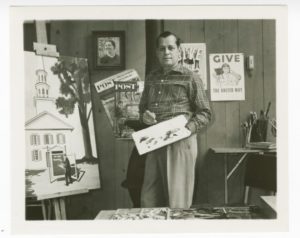
Stevan Dohanos Captures Connecticut Life
Westport resident Stevan Dohanos was one of America’s top realist illustrators, producing more than 125 popular magazine covers, and over 300 designs for commemorative postage stamps.
Read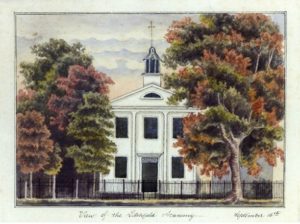
Sarah Pierce’s Litchfield Female Academy
While several educational academies existed for girls in the years following the American Revolution, few proved more influential than Sarah Pierce’s Litchfield Female Academy.
Read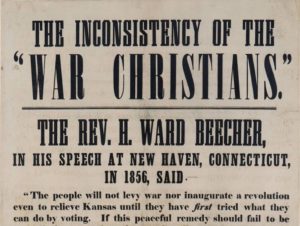
Henry Ward Beecher, a Preacher with Political Clout
This skilled orator championed woman suffrage, temperance, and the cause of anti-slavery but scandal nearly derailed his career.
Read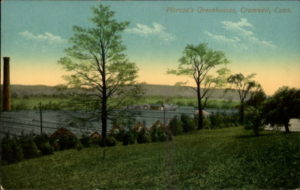
The Rose King of America Transformed Cromwell’s Landscape
Andrew N. Pierson established A.N. Pierson’s, Inc., a small floral nursery in Cromwell that evolved into the largest commercial rose growing enterprise in the country.
Read
Private vs. Public Property – Today in History: June 23
On June 23, 2005, the US Supreme Court ruled in a precedent-setting eminent domain case Kelo et al vs. New London,.
Read
John Howe Makes a Better Pin – Today in History: June 22
On June 22, 1832, John Ireland Howe (from Ridgefield, Connecticut) invented the first practical machine for manufacturing pins.
Read
J. P. Morgan’s Connecticut Roots
One of the great financiers of the late 19th and early 20th century, J. P. Morgan was born (and spent much of his youth) in Hartford, Connecticut.
Read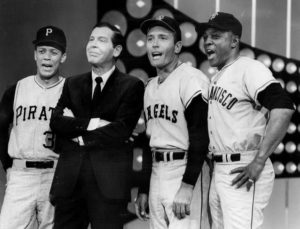
Jimmy Piersall’s Public Struggle with Mental Illness
Professional baseball great Jimmy Piersall battled with mental illness all of his life.
Read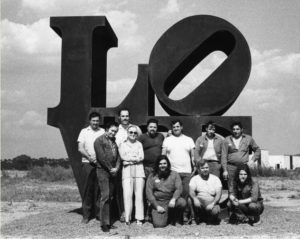
North Haven: Fabricating Sculpture in the 1960s and 1970s
Lippincott, Inc., in North Haven, was one of the most highly respected fine-arts metal fabricators in the country in the second half of the 20th century.
Read
Summer Crowds Flocked to New Canaan and Stayed
Like many towns in Connecticut, New Canaan owes much of its modern character to the evolution of industry and transportation in the Northeast.
Read
The Blake Rock Crusher – Today in History: June 15
On June 15, 1858, Eli Whitney’s nephew, Eli Whitney Blake of New Haven was granted US patent No. 20,542 for a “machine for crushing stone.”
Read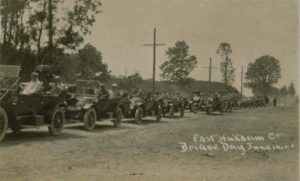
East Haddam Swing Bridge – Today in History: June 14
On June 14, 1913, the East Haddam Swing Bridge officially opened on Flag Day.
Read
Harriet Beecher Stowe Born – Today in History: June 14
On June 14, 1811, author Harriet Beecher Stowe was born in Litchfield.
Read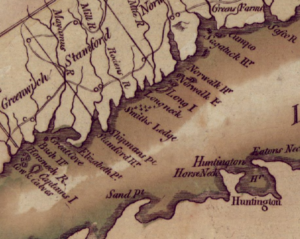
Stamford’s Three-Gun Armada
During the Revolutionary War, American privateers utilized armed whaling boats to keep the British from the colonies’ shores and prevent illicit trade in British goods.
Read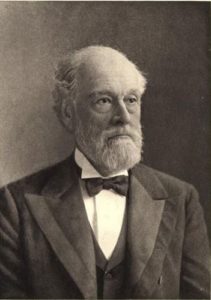
The Platt Amendment – Today in History: June 12
Orville Platt from Meriden presented the Platt Amendment to Congress in 1901. It essentially made Cuba an American protectorate.
Read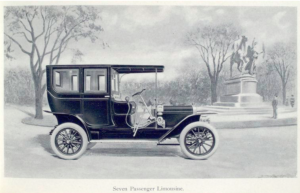
The Hardware City Could’ve Been the Motor City – Who Knew?
In 1903 the Russell & Erwin Company and the American Hardware Corporation purchased the Bristol Motor Car Company of Bristol, Connecticut.
Read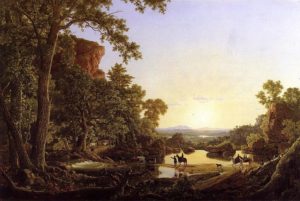
Hooker’s Journey to Hartford
In early June 1636, Puritan religious leader Reverend Thomas Hooker left the Boston area with one hundred men, women, and children and set out for the Connecticut valley.
Read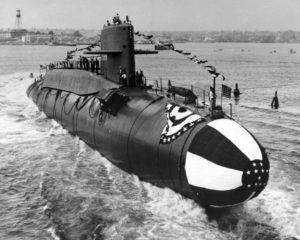
USS George Washington Launched – Today in History: June 9
On June 9, 1959, the first nuclear-powered, ballistic-missile submarine, the USS George Washington (SSBN 598), was launched at Groton.
Read
Bridge Ornaments Help Tell the Legend of the Windham Frog Fight
One June night in 1754, Windham residents awoke to a dreadful sound, the source of which has inspired tall tales ever since.
Read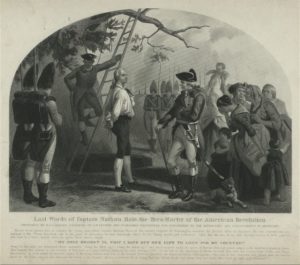
Nathan Hale: The Man and the Legend
A school teacher hanged as a spy during the American Revolution, Nathan Hale became Connecticut’s official state hero in 1985.
Read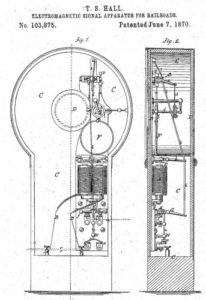
Thomas Hall’s Electric Block Railroad Signal – Today in History: June 7
On June 7, 1870, Thomas Hall patented the electromagnetic signal apparatus for railroads–better known as the automatic electric block.
Read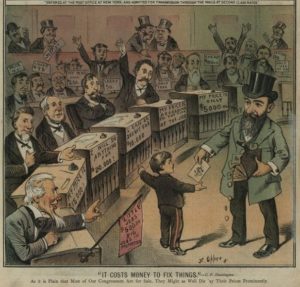
Collis P. Huntington: The Boy from Poverty Hollow
From a poverty-stricken life in Harwinton, Connecticut, Collis Huntington grew to be one of the wealthiest and most powerful railroad men of his era.
Read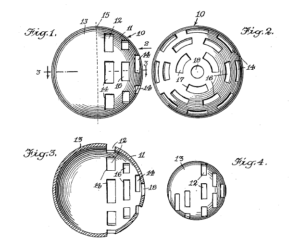
Wiffle Throws a Curve in American Leisure Time
When David N. Mullany created the concept for a lightweight ball, he didn’t know his invention would change the way children across the US played backyard baseball.
Read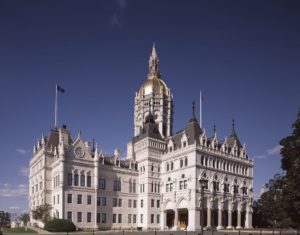
The State Cantata – Today in History: June 3
On June 3, 2003, the Connecticut General Assembly designated The Nutmeg, Homeland of Liberty by Dr. Stanley L. Ralph as the State Cantata.
ReadMore Articles


